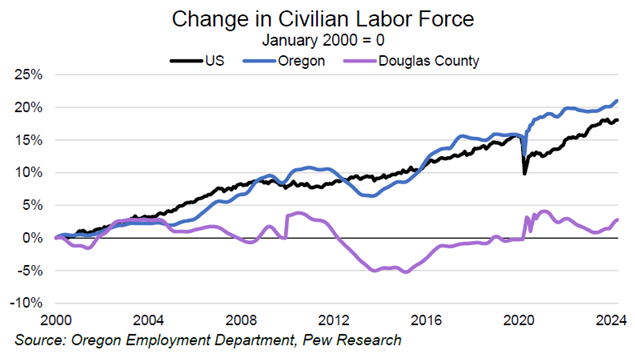Douglas County Economic Indicators - May 2024
- tcarpenter03
- May 31, 2024
- 2 min read
The May 2024 edition of the Douglas County Economic Indicators is attached and available on Quality Info.
Over the year to April 2024, Douglas County added 60 net jobs. Within that relatively little change in total nonfarm employment, there were several industries that added a decent number of jobs, such as construction and health care. Manufacturing and professional services lost jobs, with most other industries relatively unchanged. Seasonally adjusted unemployment ticked up to 5.0% over the year, which is still lower than the historical average in Douglas County.
I used the special graph this month to look at how the labor force has changed in the broader scale. Douglas County’s labor force hasn’t grown as quickly as the state or nation. There are several contributing factors, including slower population growth and an older population.
The 2008 had a particularly severe impact locally, and forced many out of the labor force over the medium term. The 2020 recession was devastating to the economy in many ways, but it doesn’t appear to have driven many people out of the labor force. Our seasonally adjusted labor force is larger now than it was pre-pandemic, and stands about 2% higher than in January 2000.
This month’s articles included:
Nonmetro vs. Metro Unemployment Rates on Quality Info
Made in Oregon: A Profile of the State’s Manufacturing Sector on Quality Info
Job Polarization, a 2023 Post-Pandemic Update on Oregon Office of Economic Analysis blog
As always, the Indicators contain all the latest economic data on our area. If you have a data question or want to learn more about any of these topics, please don’t hesitate to reach out.
Henry L. Fields
Workforce Analyst
(541) 359-9178

































Comments